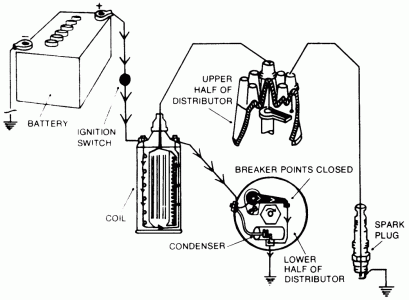- Joined
- Feb 2, 2013
- Messages
- 3,637
my kid pulled the plugs and I sand blasted them. He put a new 12vt coil. Then I went back to the shop. Next thing I know my kid
comes running all burnt up for a extinguisher. Well he's alright just singed up a little, dozer was yellow now its black. Kid said no 2
cyl exploded when he started threading the spark plug in thus catching the gas tank fire.
The impossible question HOW? Engine is coil points system not "magneto"- Ign Off, Kill switch off, gas shut off valve off.
weather around 60* grass kind of due'ey (wet) , the kid dont smoke.
so dont the weather rule out static charge from his fingers. He allready put one plug in, it was cyl 2 that blew right at him. He is sitting
on a steel track, so his butts grounded.
One for the books tottally impossible. Just can - not happen. And my kids a DFD fireman, been to fire academy knows about high tension
line fires and such.
any thoughts gentlemen.......
HI,
I have a possibility to interject.
you said you sand blasted the plugs, a lot of static electricity is built up when sandblasting.
it could have been that the spark plug held the static electricity charge and when inserted into the hole the static jumped the gap to ground.
you made no mention of the spark plug wire being attached to the plug when the fire occurred, so, i'll make the assumption it was not there. most times the plug is installed, then the plug wire is installed.
if my assumption is correct this would not indicate any fault in the ignition system because it was not actually hooked up to deliver any spark from the ignition coil.
some spark plug sockets have a piece of rubber that cushions the spark plug and fix it's alignment in the socket when tightening. rubber is an excellent insulator of static electricity as well.
that fact brought me to the conclusion offered, by no means the only possibility...
but one of high plausibility
if there are more facts available, i'd be happy to go deeper into the mystery.
mike )
)
comes running all burnt up for a extinguisher. Well he's alright just singed up a little, dozer was yellow now its black. Kid said no 2
cyl exploded when he started threading the spark plug in thus catching the gas tank fire.
The impossible question HOW? Engine is coil points system not "magneto"- Ign Off, Kill switch off, gas shut off valve off.
weather around 60* grass kind of due'ey (wet) , the kid dont smoke.
so dont the weather rule out static charge from his fingers. He allready put one plug in, it was cyl 2 that blew right at him. He is sitting
on a steel track, so his butts grounded.
One for the books tottally impossible. Just can - not happen. And my kids a DFD fireman, been to fire academy knows about high tension
line fires and such.
any thoughts gentlemen.......
HI,
I have a possibility to interject.
you said you sand blasted the plugs, a lot of static electricity is built up when sandblasting.
it could have been that the spark plug held the static electricity charge and when inserted into the hole the static jumped the gap to ground.
you made no mention of the spark plug wire being attached to the plug when the fire occurred, so, i'll make the assumption it was not there. most times the plug is installed, then the plug wire is installed.
if my assumption is correct this would not indicate any fault in the ignition system because it was not actually hooked up to deliver any spark from the ignition coil.
some spark plug sockets have a piece of rubber that cushions the spark plug and fix it's alignment in the socket when tightening. rubber is an excellent insulator of static electricity as well.
that fact brought me to the conclusion offered, by no means the only possibility...
but one of high plausibility
if there are more facts available, i'd be happy to go deeper into the mystery.
mike


